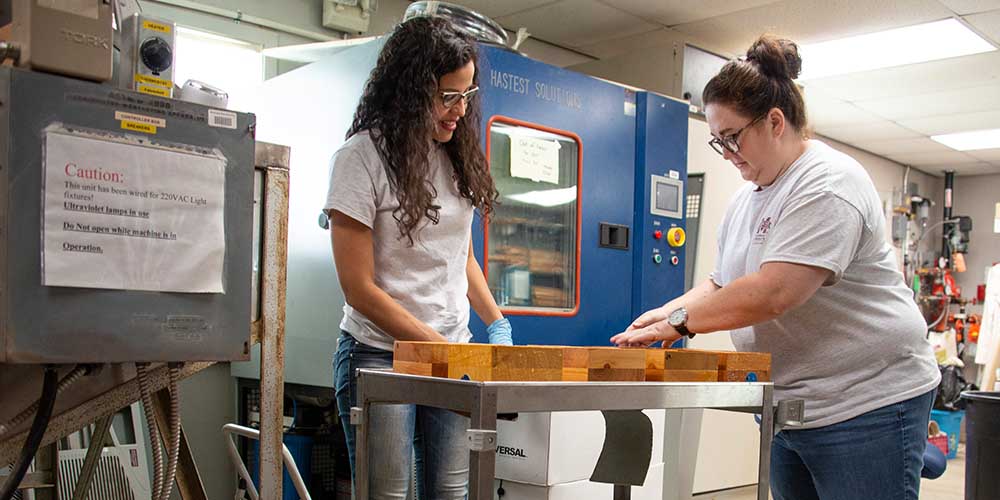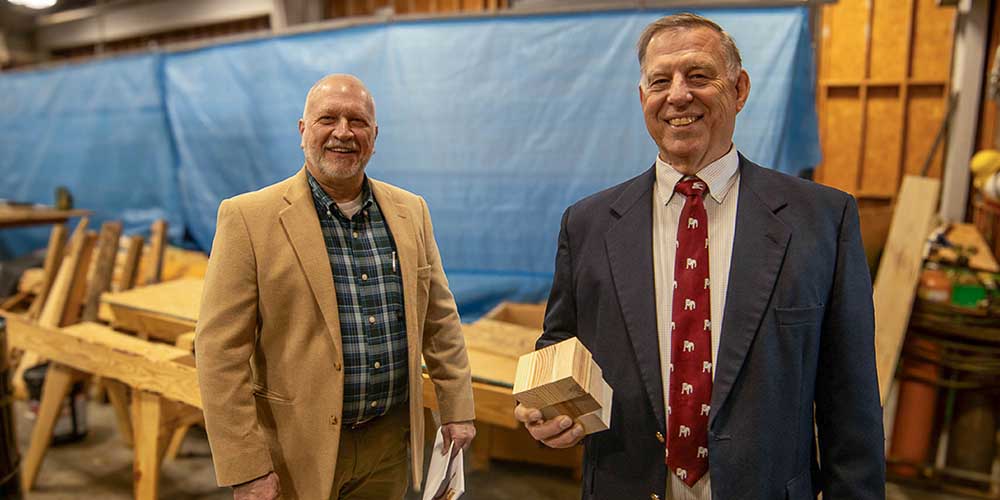Building Materials and Composites Stories

Protecting a New Building Material
A new building material is making its way into the U.S. market. Cross-laminated timber, or CLT, which has been used to construct large buildings in Europe for the last two decades is experiencing growth as a building material in the U.S. and Canada. Dr. Beth Stokes, scientist in the Forest and Wildlife Research Center and associate professor in the Department of Sustainable Bio products, noticed that the turn-key building approach CLT affords has plenty of benefits. Stokes, along with Gabrielly Dos Santos Bobadilha, post-doctoral associate and others, have evaluated various coatings to protect CLT from elements such as rain, heat, and high humidity. The research is part of a five-year study Stokes hopes to continue as the CLT industry grows.
2019

Market Barriers
Dr. Dan Seale, a professor in Mississippi State's Forest and Wildlife Research Center, is working to increase the value of undervalued hardwood species like yellow poplar and sweet gum. Through a USDA Forest Service grant, Seale's team has created a database mapping area in the eastern U.S. with high volumes of these species, helping mills locate ideal spots for processing facilities. The goal is to improve the economic value of Mississippi's timberland by finding new uses for these woods. Keith Ward, a doctoral student, is analyzing the suitability of these hardwoods for engineered wood products like I-Joists and structural panels. By developing markets for this timber, the research benefits landowners, mills, and the broader supply chain, creating jobs and boosting the economy.
2023

Using the Resources
Dr. Mostafa Mohammadabadi, an assistant professor at Mississippi State's Forest and Wildlife Research Center, is researching ways to utilize small-diameter and underutilized materials (SDUs) in forests, which are often left unused due to high transportation costs. By developing products similar to cross-laminated timber (CLT) and glue-laminated timber (glulam), SDUs can be repurposed for construction, reducing wildfire fuel and preventing carbon emissions from burning. These wood products are carbon-negative, as they continue to store carbon even after being cut. This research aims to improve forest health, create a market for SDUs, and support sustainable forest management practices. The project also emphasizes education, inspiring students from diverse disciplines to contribute to creating green solutions in forestry and construction.